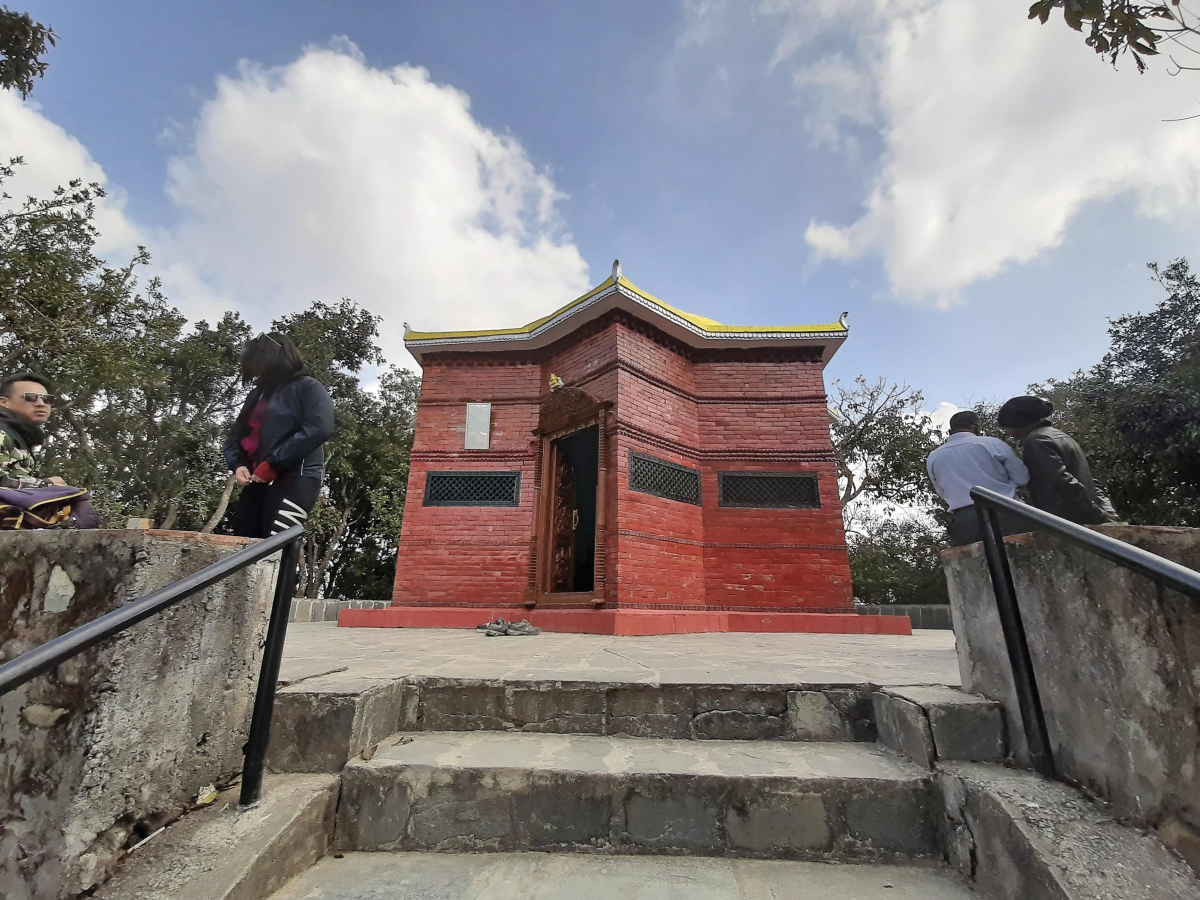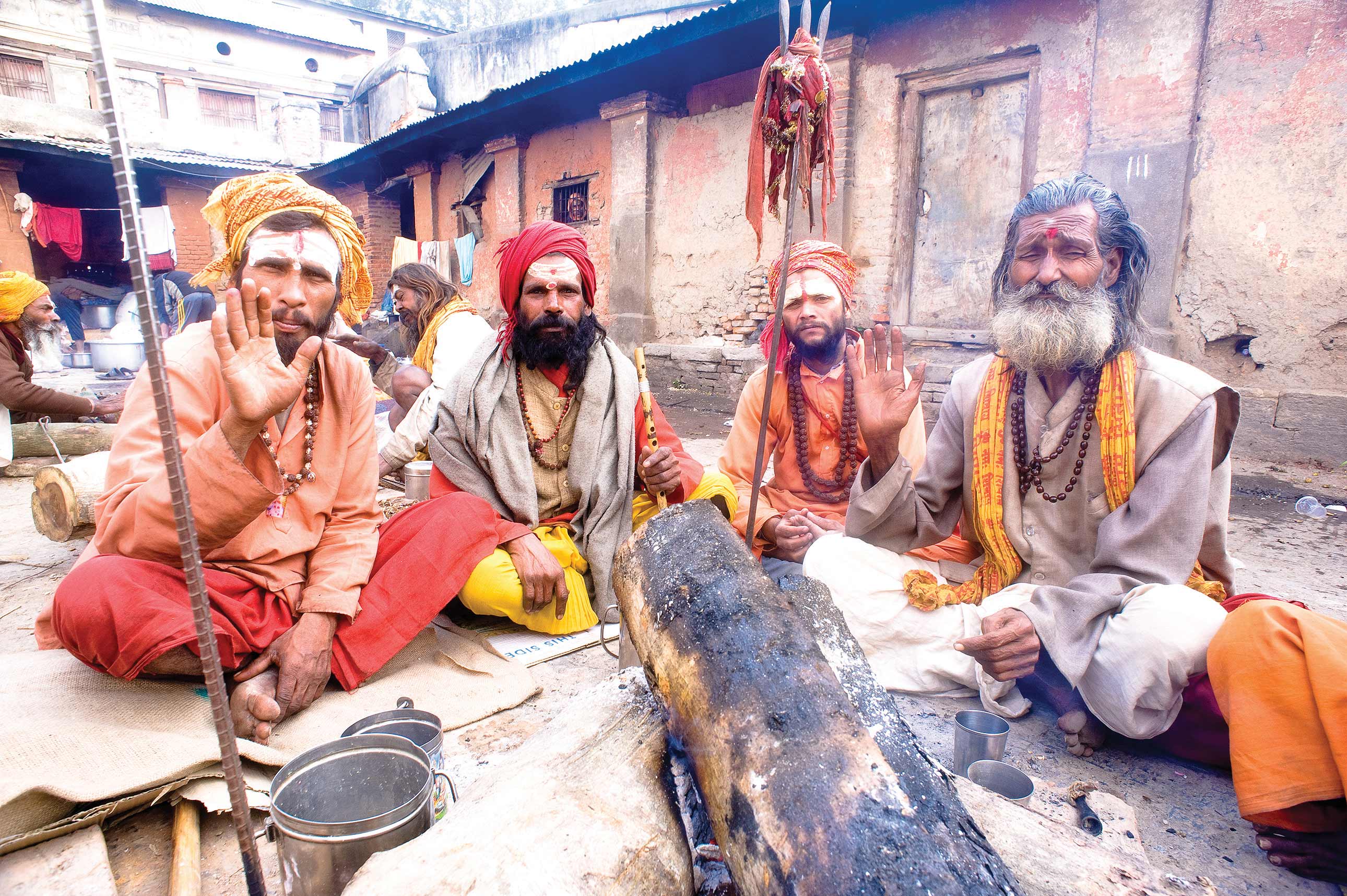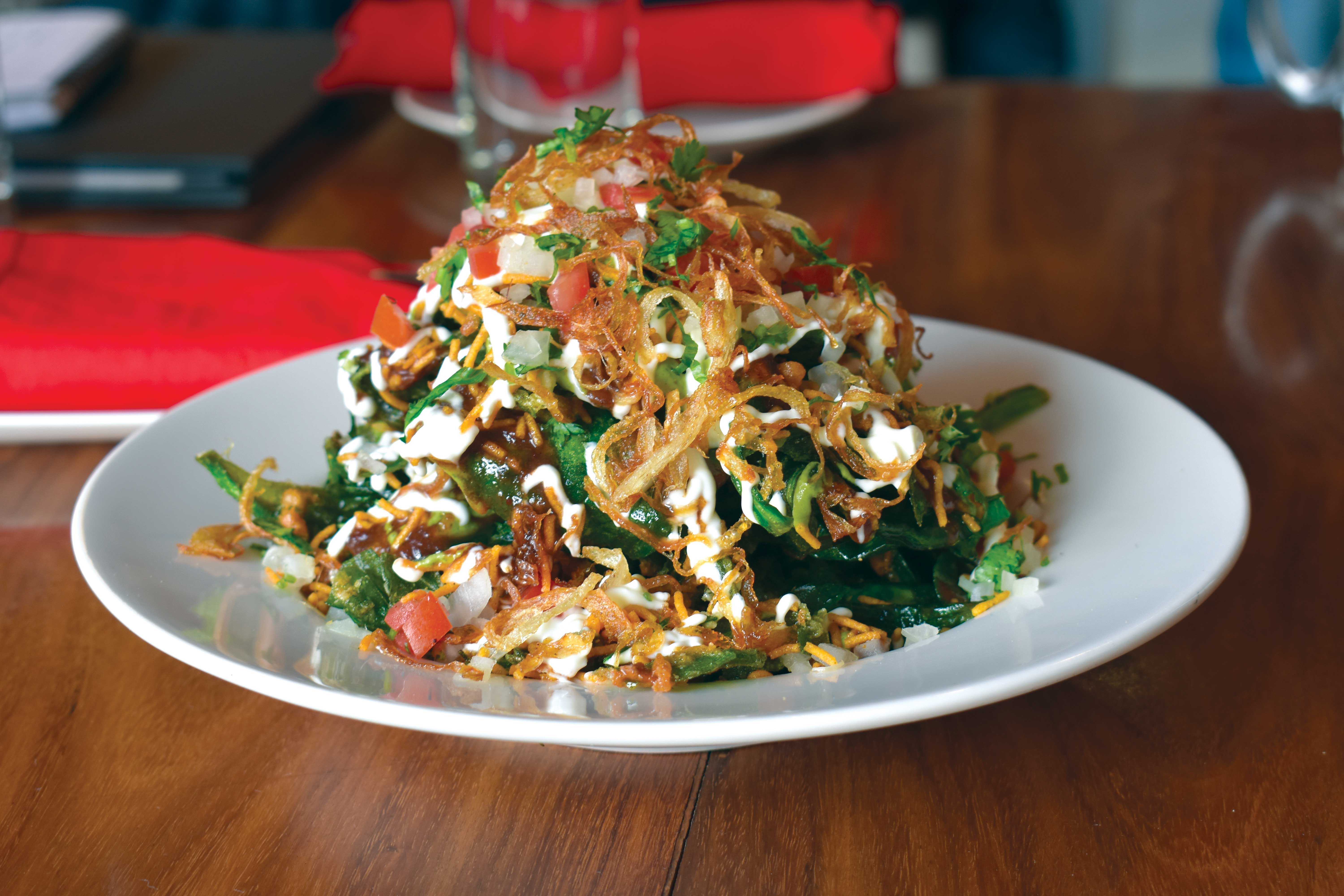Reaching 28,028 feet aboven the far western Tibetan plateau, Mount Kailas touches the heavens like a jewel from a sea of sand and rock, assured in her divinity. For millennia, pilgrims from all over central Asia have journeyed to Mount Kailas to celebrate Buddha’s birth, death and enlightenment and do the ritual 32 mile circumambulation (kora) of the mountain that is said to erase the sins of a lifetime. To pilgrims it’s the navel of the universe, where heaven meets earth and myth merges with reality. Compared to the mythic image of Mount Meru, the great mountain of Asian religions, Mount Kailas is the center of the universe, around which all creation revolves.
We had finally come to this mysterious mountain—the high point of our journey. After a week of strenuous hiking through far western Nepal and several days traversing the desolate
Tibetan plateau on the back seat of a suspender-less four-wheel drive, we reached the amphitheater of cliffs at the foot of Mount Kailas. It was May, the moon was full and it was Buddha’s birthday; we arrived just in time for the annual Saga Dawa festival to celebrate his enlightenment. Together with hundreds of Tibetans we assembled around the Tarpoche, a 30-foot flagpole stretched long on the ground. Raising the Tarpoche was the main event of the festival. Gradually, it was raised by groups of pilgrims pulling on the ropes attached to the top and middle of the pole. Even Chinese trucks lined up to help. An elderly Tibetan sage adorned in a dusty golden coat and a fringed scarlet hat managed the project with a single-toothed smile, wild gesticulations and chants. Meanwhile a crowd encircled the flagpole like a school of herring mumbling “om mani padme hum” and running prayer beads through their fingers.
The atmosphere was thick with a cacophony of long horns, drums, chants and shouts of joy. Each time the pole rose a few inches, the crowd joined in with a jubilant “tzo tzo tzo” and threw handfuls of confetti and millet flour up in the air. Numerous faces were dusted white by the flour and looked like ghostly clowns. They giggled, indulging in their own absurdity. Amidst the crowd I now and then glimpsed one of the few Gore-Texed Westerners circling the pole.
Oh, how I envied the Tibetan pilgrims! I wanted to shed my synthetic uniform, dress up in funky fur hats and crazy coats and throw millet up in the air along with them. But truth was, I had mixed up feelings about intruding upon and having the honor of partaking in their festival, these people were an outpouring of myth and belief confirming a depth of spirituality and faith reaching far beyond my own spiritual reality. I saw no doubt in their faces; their intention for paying homage to the mountain seemed clear, natural and unquestionable. Contrarily, I saw us as a group of spiritual seekers expecting personal transformation and enlightenment by simply showing up at this remote, sacred place. But is there any easy way to enlightenment? I wasn’t so sure.
Two years before, I met Diane Brice, a crazy Australian travel guide, at the foot of Mount Everest. We shared a dream of going to Mount Kailas and decided to one day arrange our own pilgrim tour. Through Internet and word-of-mouth 13 courageous people eventually signed up to come with us. What a strange group we turned out to be, from countries as diverse as Denmark, America, Canada, England, France, Singapore and Australia, ranging from 20 to 75 years of age. Apart from my friends Iben and Michael, and Christian, my new boyfriend, they were all strangers to me. I was especially curious about 75-year-old John and his 30-years younger wife, Linda. They were into UFOs and transcendental experiences. Three middle-aged women hoped the trip would transform their lives, while a French computer programmer wanted to complete the kora for her deceased Guru. Phil, Annie and Nathan, all in their 20s, joined us for the adventure.
It soon became apparent that our party had little in common except inexperience in mountain hiking. I immediately sensed problems. We met in Kathmandu two weeks ago. Romantic notions of pilgrimage soon evaporated in the reality of last minute tour preparations: China had closed its borders to Americans, a group member was missing and we were short of supplies and guides. Meanwhile, I entertained the would be pilgrims,
romanced Christian and battled a urinary tract infection. Regardless, we started our journey with several sweaty days in Nepalgunj, a mosquito-ridden town on the border to India and the gateway to far western Nepal. As we dodged malaria and waited for the monsoon to lift for our departure to Simikot, culture shock and barely hidden hysteria spread among our group. Suddenly, none of us were who we’d said we were.
When our tiny plane landed on the pot-holed airstrip in Simikot in the Himalayas, we stepped out into the crisp mountain air, instantly reinvigorated. Our Nepalese crew of guides, porters and mules greeted us. “Namaste!” They fed us fried noodles and peanut butter jelly sandwiches, the main ingredients of our diet for the next three weeks, before we embarked upon a six-day meander to the Tibetan border. At first it was fine. We slowly made our way up the trail, struggling to get back into the swing of trekking. I remember how Diane caught up with me. “This is great,” she smiled between gasps. “We are really doing it, Lone. We are finally going to Kailas together. Yahooooo!” I hadn’t heard the notorious Diane-cheer for a while. She yelled it to the sky like a lovesick werewolf.
It was great to be walking again. Most pilgrims walk to Kailas for days, weeks, months on end. It is an essential part of the pilgrimage, the never-ending walking. Muscles tense at first, but then slowly loosen up. One leg serves as a pillar, holding the body upright between the earth and sky, while the other leg swings like a pendulum. To the sound of the wind and the carillon of cow bells dangling around the donkeys’ necks, I wandered through the landscape and my mind simultaneously. I was in my essence. Four hours later the fastest of us arrived at our first camp situated next to the Karnali river. We peeled off our boots and socks, lay back on the ground and savored the sunshine as though it was a melting creamsicle.
Several hours later, Diane briskly crossed the bridge followed by John. He limped awkwardly, supported by Dodge, one of the guides. Furiously, she pulled me aside. “John has been such a drag. And Linda, Argh! I tell you, they are really unpleasant to walk with. “‘What happened?’” He couldn’t walk downhill and, I don’t know, he just kept bitching,” she frowned. “From now on he is yours. I’m not walking with him again.” The reality of leading a group had caught up with me. At dinner, John stood stiffly in the doorway to the kitchen tent. “I have no problem either walking or carrying my own bag as some of you seem to think.” He left as abruptly as he came, leaving the rest of us puzzled. It dawned upon me that he was my sole responsibility. All his pleas and negotiations before the trip as to whether he could make it or not, fell away. I was seriously worried. The following morning I found a horse for John with the porters’ help. Grudgingly, he accepted it. The image of John, tall with his long white beard enthroned on the tiny horse, riding up the slanted hillside still amuses me. He resembled a monk on his way to a distant monastery. Only the disparity between him, the size of the horse and his cowboy hat perverted the otherwise spiritual image.
It didn’t last long. Fear of falling when navigating the slanted hillsides, helped recover John’s second wind—he soon resumed walking. I secretly prayed he would get a third and a fourth wind when the going got tougher. As we made our way through the mountains the increased altitude marked the group in various ways. Altitude slows everything down. Each step is like a thought. Each exhalation becomes a delayed catharsis. This is where the inner work of a pilgrimage takes place. You can’t escape yourself. Thoughts, issues and emotions surface and all you can do is walk on. If not outright sick, most of us were self-absorbed in our emotional and physical struggles. At night the camp turned into a graveyard, only disturbed by the sound of tent zippers and a donkey’s lonely cry.
One night Chris and Jen, the Australian doctor’s wives, broke the
silence. From our tent we heard them sobbing and moaning outside their tent dressed in T-shirts. They were naked from their waists down, wiping each other’s legs. The headlights on their foreheads lit up their faces in bizarre grimaces and made them look like a
dolorously silhouetted puppet show. They had an uncontrollable bowel explosion. “Ooh no,” Christian uttered, “Ooh no.” Watching them fall apart, we couldn’t stop laughing into our pillows at the tragic comical situation. That night we baptized them the Shit Sisters, knowing that it could very well happen to all of us.
John became increasingly withdrawn and obnoxious. One night at the windy SipSip meadow he exploded in my face: “If I were American, I’d sue you. This is much harder than you told us. We could all die out here.” He was right. The responsibility weighed like a heavy cross on my shoulders. Needless to say, by the time we finally came to the
Tibetan border the group spirit had evaporated. Small cliques had formed; Christian became increasingly needy and disenchanted with my focus on the group; Iben and MaryAnn had a fallout, then MaryAnn avoided us all completely, upset that Christian and I showed our affection publicly. Oh, and Diane had scabies on her butt.
We were all more than happy to crawl into the jeeps awaiting us, to be transported across the plateau to Kailas. Or at least everyone but Diane. Three days later we arrived at Darchen, a dust-blown tent village below Mount Kailas from where we started our kora around the mountain. There, amidst the Saga Dawa festivities, we relaxed and gathered energy for the rest of the kora. That evening, the long horns, the chants and happy faces lulled me into a sound sleep. The following morning seven of us were strong enough to embark on the three-day hike around the mountain. Three guides and a band of yaks came with us. Meanwhile, the rest of the group either went to the adjacent Lake Manasarovar to mediate, or drove the long way to see the Guge Kingdom.
Alongside curiously smiling Tibetans, we made our way across the valley floor towards the Dolma Pass and our pending karmic release. We were in good spirits. Although, altitude simultaneously pulled me backwards and nudged me forward, I felt our goal was within reach. Some Christian pilgrims carry the cross to their destination. Tibetans themselves prostrate; sometimes the entire 32 mile journey. They fall to their knees and stretch their bodies along the ground, reaching out in front of their face, face down, to touch the soil. Then they push themselves back up on their knees, stand up and take another three steps only to repeat the endeavor.
I may not have carried a cross or inched along the ground like a worm, but I did feel the weight of my karma on my shoulders. It got heavier with each inch we increased in altitude. On the desolate Tibetan plateau, where heaven meets earth, we seemed so small, insignificant and out of place. Confronted with such silence and space, our personal problems magnified and there was no place to hide. I suddenly felt unprepared for the kora, unsure what I personally wanted to bring to the mountain. With remorse, I thought about Shiwa Tsal, the holy site immediate before the summit of Dolma Pass where pilgrims leave personal tokens to the mountain. Usually, pilgrims cut off a lock of hair, leave a treasured item or slice their fingers to drib a few droplets of blood on the rock. They do that to create a symbolic link to Kailas, hoping it will aid their soul’s journey after death. I hadn’t been able to focus my intentions for the pilgrimage and determine what I wanted to leave behind to create that soulful link to the mountain. My self-doubt? I wondered if it even mattered. Dominated by the immensity of the land, I instinctively knew that all of it was beyond my control. I sensed larger, unseen forces taking over.
“I’ve been walking all alone and I didn’t know which way to go. You said, there would be someone behind me.” Patricia cried out as she finally arrived at our campsite below Kailas. With the sun setting, it had gotten colder and both Chris and Patricia seemed close to
nervous breakdowns. Exhausted and close to their limits, they complained about everything until Christian confronted them with their lack of team spirit. That night, bad weather engulfed us. We woke up to a thick layer of snow, which made it impossible for the yaks to cross the Dolma Pass. Kailas was swaddled in dark clouds, as if to
reinforce that our vision wasn’t clear.
I felt she was rejecting us and worried about my group’s ability to make it through. We only had three days to complete the kora before we were to reunite with the rest of the group for the long drive to Lhasa. But, oddly enough, for the first time during the entire pilgrimage clarity and confidence struck me. Despite tears and disappointment I called off the kora. I knew some group members weren’t able to climb the high Dolma Pass in such short time. Even more so, I knew we weren’t ready for our collective karma release.
After accepting the situation and my responsibility for the group, I felt lighter walking back; humbled. By not being able to complete the kora, we paid homage instead to the ancient spirit of place and the moods of the natural elements. It struck me that pilgrims cannot be led to their destination. People become pilgrims for very personal reasons, hoping to earn spiritual transformation through the labor of walking, by themselves, for themselves. Walking is the destination. I thought I had come to Kailas as a leader, but in fact became a pilgrim and maybe even burned off a bit of karma along the way.
Lone Mørch Schneider is a Danish photographer, writer and traveler currently living in San Francisco. For her story ‘Accidental Pilgrim’ (previously published in Magical Blend #84, February 2003) she won the 2002 Mary Tanenbaum Literary Award from The San Francisco Foundation. Her article is reprinted here by permission. Ms. Schneider can be contacted through her website: www.lonemorchschneider.com.

Massage Away your Stress
A Five Thousand-Year-old Ayurvedic massage helps you de-stress from your hectic life. Life brings in a lot...








